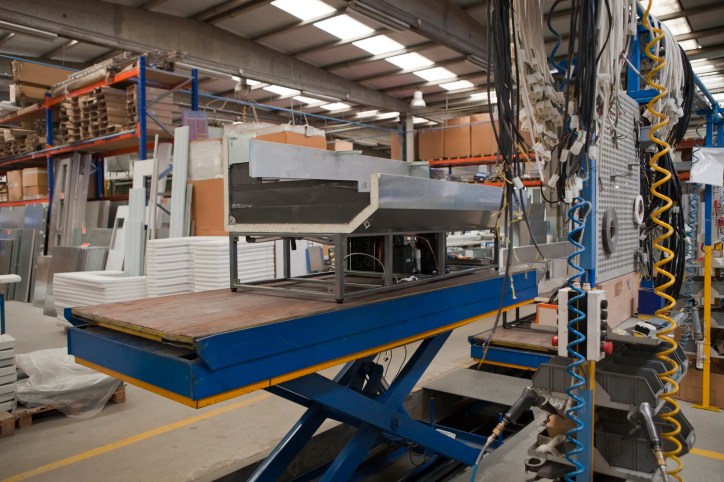Due to their safety features and stability, scissor lifts are a popular type of raising and lowering platform in workplaces. When not used properly, however, scissor lifts can present a serious hazard to workers, which is why ANSI MH29.1-2020: Safety Requirements For Industrial Scissors Lifts exists.
What Is an Industrial Scissor Lift?
A scissor lift is a mobile supported scaffold work platform that is used for interior maintenance work, such as ceiling construction, painting, and sign hanging, in a variety of industries like retail, automotive, film, and manufacturing. Its purpose is to lift materials and workers, who are guarded by a railed platform, vertically to the desired working heights, ranging from 19 to 59 feet. The X-pattern of the crisscrossing braces (pantograph) compresses and extends it, enabling vertical movement. Since a scissor lift can collapse and be easily stored, it is a true rival to the traditional ladder, and it can hold multiple workers at once unlike an aerial forklift.
What is ANSI MH29.1-2020?
ANSI MH29.1-2020 applies to industrial scissors lifts that are raised and lowered by means of hydraulic, pneumatic, or mechanical actuation for commercial applications on firm and level surfaces. These industrial scissors lifts specified in this American National Standard are either stationary or mobile and used to position, feed, transfer, load, or unload materials or personnel.
Here Are the Objectives in ANSI MH29.1-2020:
- Prevention of personal injuries and accidents
- Criteria for design, manufacture, performance, and operation
- Understanding of respective responsibilities among designers, manufacturers, owners/users, and operators
What Are the Different Types of Scissor Lifts?
Scissor posts are powered by various fuels (hydraulic, diesel, gas, liquid propane, electric, air pressure) that help the machine operate the lift and move the platform up and down on level surfaces. Here are the five types of scissor lifts:
- Hydraulic
- Diesel
- Electrical
- Rough terrain
- Pneumatic
Considering the lift strength, height, load stability, loading method, travels, and platform size are all important elements in picking the right type of industrial scissor lift.
Can a Scissor Lift Fall Over?
Yes, if the load is off-center or if a worker is leaning out of the lift, it is not difficult for a scissor lift to topple over. Factors, such as operator error, machine fault or malfunction, getting knocked by another object (e.g., machine), and not being adjusted for the terrain are the biggest causes of a scissor lift falling over.
Here Are Some Safety Precautions ANSI MH29.1-2020 Mentions
Before adjustments and repairs are started on the scissor lift, the following precautions shall be taken as applicable:
- Remove the load from the platform.
- Lower platform to the full down position.
- If possible, secure a maintenance device or blocking to prevent unintended platform movement.
- Relieve system pressure from all circuits before loosening or removing any components.
- Ensure all controls are in the “off’ position.
- Ensure all operating features are secured from accidental motion from brakes, blocks, or other means.
- Disconnect power and follow established control of hazardous energy policies.
- Follow precautions and directions as specified by the manufacturer.
ANSI MH29.1-2020: Safety Requirements For Industrial Scissors Lifts is available on the ANSI Webstore.
Questions About ANSI MH29.1?
Please direct any technical questions relating to this American National Standard to the developer. You can find the contact information for all standard developing organizations (SDOs) here: Who to Contact for Standards Related Questions.
